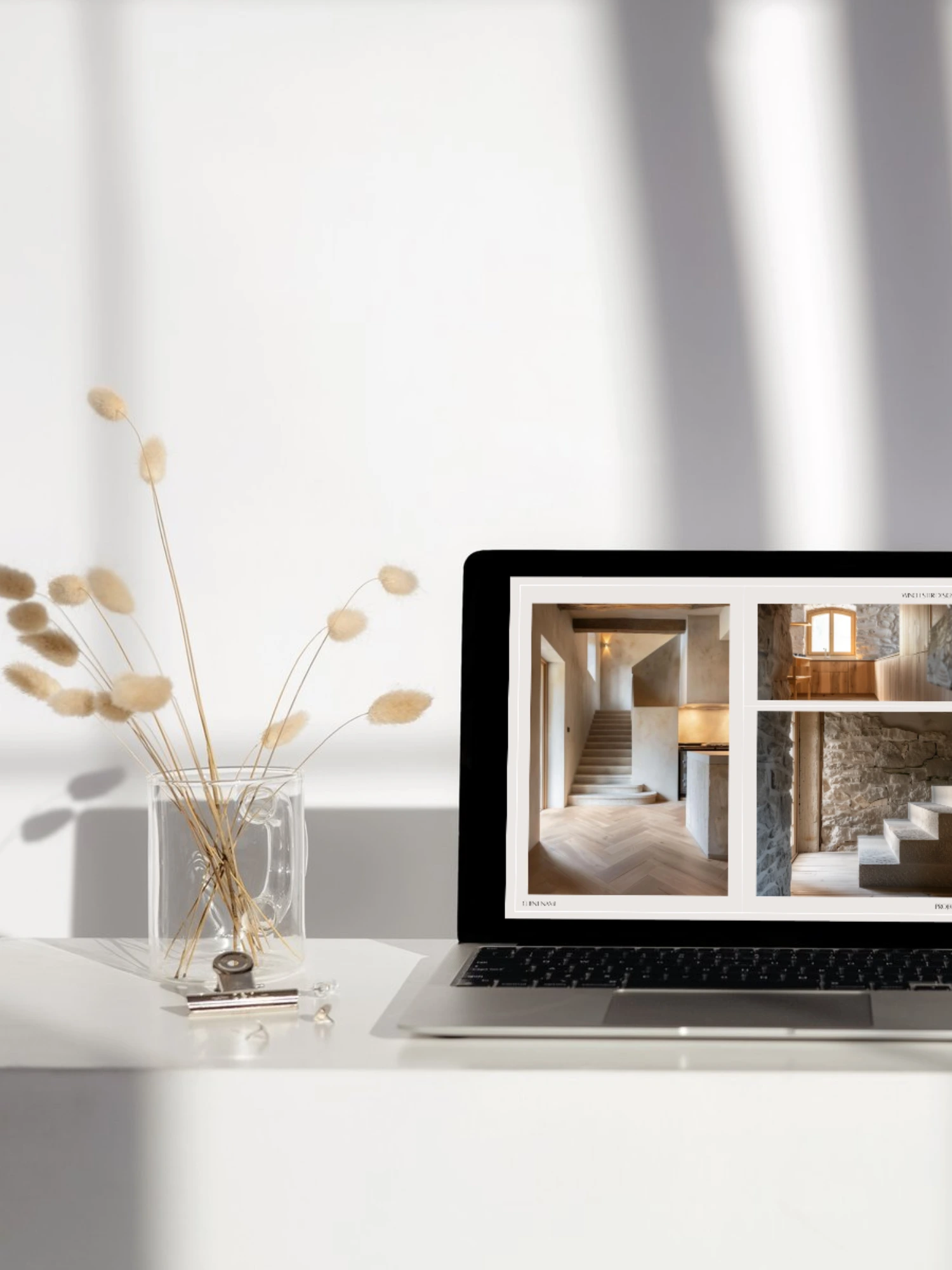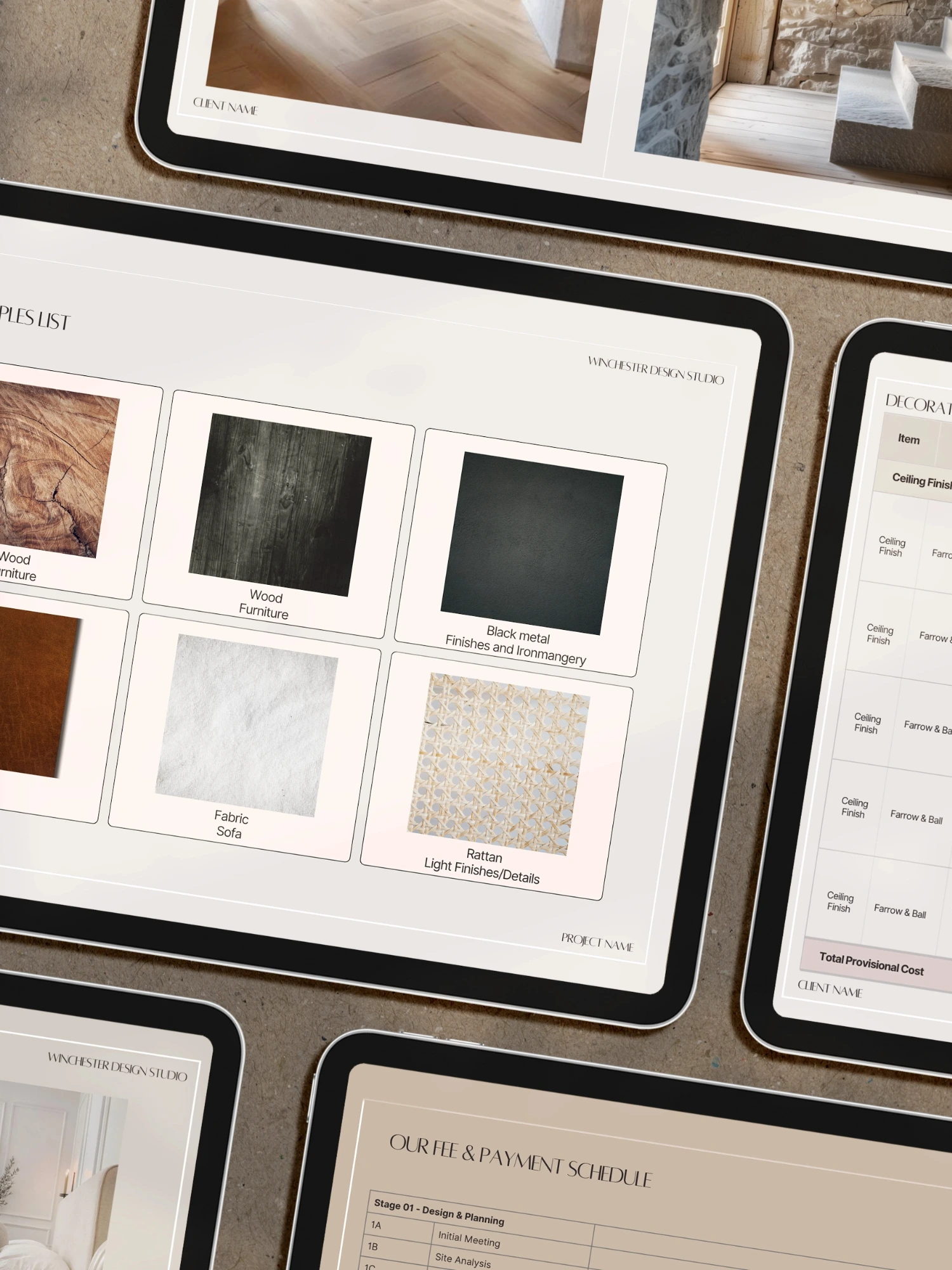Interior Design Questionnaires: What Questions to Ask Your Clients
- Architecture Templates .co.uk
- Nov 25, 2024
- 4 min read
Updated: Dec 8, 2024
Working with clients, especially first-timers, is about building trust and managing expectations. According to the Royal Institute of British Architects (RIBA), guiding new clients through the process is critical to success. From timelines to costs, keeping them informed and aligned ensures smoother projects and happier clients.
This starts with asking the right questions. A well-crafted interior design questionnaire not only uncovers your client’s vision but also lays the groundwork for a collaborative and professional relationship.
In this guide, we’ll explore how to use questionnaires effectively during initial consultations to create a fee proposal and scheduled consultations to dive deeper into project details without wasting your time. Plus, you’ll learn how to streamline your process and elevate your client experience.

Why Use an Interior Design Questionnaire?
Clarity for Both Sides: They ensure you and your client are aligned from the start, reducing misunderstandings later.
Time-Saving Tool: By gathering detailed information upfront, you minimise back-and-forth emails and delays. I'm all for reducing the amount of emails I have to go through.
Professionalism: A polished questionnaire shows your expertise and reinforces trust. What a first impression right?
Whether you’re creating a fee proposal or diving into the nitty-gritty of design preferences, a well-thought-out questionnaire sets the stage for a seamless project.

Stage 1: Initial Consultation – Building Trust and Preparing the Fee
The first consultation is your chance to build rapport and understand the project at a high level. A focused questionnaire will help you gather the key details you need to prepare an accurate fee proposal.
What to Ask in the Initial Consultation:
✔ Client Vision: What do you want to achieve with this project?
✔ Lifestyle Needs: How do you use the space currently, and what changes are you looking for?
✔ Project Scope: What rooms or areas are part of this project?
✔ Budget Expectations: Do you have a ballpark budget in mind?
✔ Timeline: Are there specific deadlines or timeframes we need to consider?
✔ Decision Makers: Who will be involved in approving decisions during this project?
Why It’s Important:
These questions help you:
Identify the project’s scope and complexity.
Manage expectations around budget and timeline.
Build trust by showing you’re organized and attentive.
Use this information to create a fee proposal that reflects the client’s needs while avoiding scope creep.
Stage 2: Scheduled Consultation – Diving Deeper After the Agreement
Once the client agrees to your fee proposal, the second consultation is all about details. This stage focuses on gathering the information you need to create a design that truly resonates with your client.
What to Ask in the Scheduled Consultation:
✔ Style Preferences: Are there specific design styles, colors, or materials you love or dislike?
✔ Inspirations: Do you have any inspiration images, Pinterest boards, or ideas to share?
✔ Functional Needs: What specific storage, furniture, or layout requirements do you have?
✔ Lifestyle Details: Are there any unique needs, such as accommodating pets, kids, or workspaces?
✔ Communication Preferences: How would you like updates—email, in-person, or calls?
Why It’s Important:
At this stage, you’re moving beyond surface-level details to:
Align your design with the client’s vision and lifestyle.
Avoid surprises by addressing functional needs upfront.
Reinforce professionalism by tailoring your communication style to their preferences.

Common Mistakes to Avoid
Even with a great questionnaire, there are a few pitfalls to watch out for:
Overloading the Questionnaire: Keep it concise and focused on what’s essential for each stage. That's why we would suggest that you break this down. No client wants to fill in an 80-question questionnaire if they don't know they're going to work with you.
Skipping Budget Questions: Avoiding this conversation early can lead to misaligned expectations later.
Failing to Follow Up: If responses are unclear, take the time to clarify before proceeding.
The Role of Questionnaires in Branding Your Business
A well-designed questionnaire isn’t just functional—it’s a branding opportunity. It shows your attention to detail and reflects the professionalism of your entire process. Use branded templates with your logo, fonts, and colors to make a lasting impression.
Join the Waitlist for My Interior Design Client Questionnaire Templates
Want to simplify your consultation process and elevate your client experience? My Client Questionnaire Templates are designed to guide you through both stages of consultation with ease.
This upcoming product includes:
A ready-to-use template for Initial Consultations to help you prepare accurate fees.
A detailed questionnaire for Scheduled Consultations to align on every design detail.
A polished, branded design to reinforce your expertise.
Final Thoughts
Interior design questionnaires are more than just tools. By using them strategically during initial and scheduled consultations, you can create an exceptional client experience while staying organised and professional.
Start refining your process today, and when my templates launch, you’ll have everything you need to hit the ground running.
Until next time,






